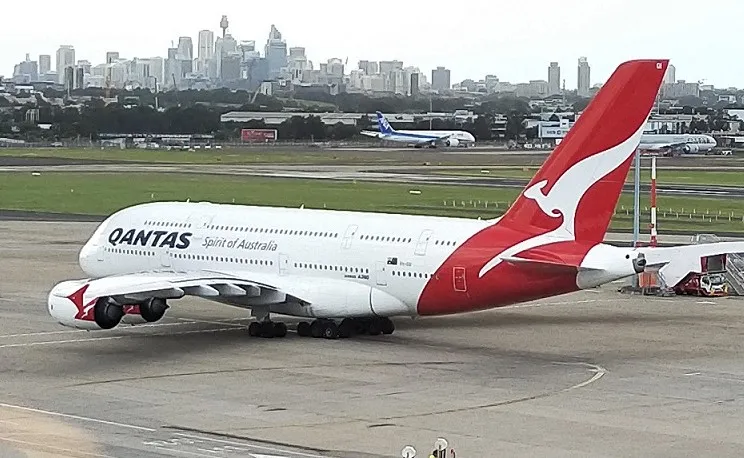
Qantas profit hit by fuel costs and exchange rate
Aug 22, 2019

Qantas has reported a significant decline in profits, largely attributed to rising fuel costs and unfavorable exchange rates. The airline's operational expenses have surged due to increased fuel prices, which have put pressure on its margins. Additionally, fluctuations in the currency exchange have impacted the cost of international operations, further straining financial performance. Despite these challenges, Qantas remains focused on implementing strategies to mitigate risks and enhance operational efficiency. The company aims to navigate these economic hurdles while maintaining its commitment to providing quality service and ensuring customer satisfaction in a competitive aviation market.
As Qantas Airways navigates the turbulent skies of the aviation industry, recent financial reports reveal a significant impact on the airline's profitability due to soaring fuel costs and adverse exchange rate fluctuations. This article will explore the details surrounding Qantas' profit challenges and how these factors interplay within the broader aviation sector.
Fuel Costs: A Major Contributor to Profit Decline
The aviation industry has always been sensitive to fuel price volatility. In recent months, Qantas has faced a sharp increase in fuel costs, which has taken a toll on its overall profitability. As global oil prices surged, the airline saw its operational expenses rise steeply. This spike in fuel costs is not an isolated phenomenon; it is reflective of the broader market trends affecting all airlines.
In Qantas’ financial report, it was noted that fuel costs accounted for a substantial percentage of the airline's total operating expenses. The impact of these rising costs cannot be understated, as they directly affect ticket pricing and overall demand for air travel. With travelers becoming more price-sensitive, Qantas has had to navigate the delicate balance between maintaining profitability and offering competitive fares.
Exchange Rate Fluctuations and Their Impact
In addition to fuel costs, exchange rate fluctuations have further complicated Qantas' financial landscape. As an airline that operates internationally, Qantas is particularly vulnerable to changes in currency values. A weaker Australian dollar can increase the cost of purchasing fuel and other essential services priced in foreign currencies, subsequently affecting the bottom line.
For Qantas, the exchange rate dynamics have led to increased operational costs, making it more challenging to sustain profitability. As the airline continues to expand its international routes, managing these currency risks becomes critical. This situation highlights the importance of hedging strategies and financial management to mitigate the adverse effects of exchange rate volatility.
Chart: Qantas Profit Trends vs. Fuel Costs and Exchange Rate
To better illustrate the relationship between Qantas' profitability, fuel costs, and exchange rate fluctuations, the following chart provides a visual representation of these interrelated factors over the past year:
| Quarter | Qantas Profit (AUD million) | Fuel Costs (AUD million) | Exchange Rate (AUD/USD) |
|---|---|---|---|
| Q1 | 300 | 150 | 0.75 |
| Q2 | 250 | 200 | 0.72 |
| Q3 | 200 | 250 | 0.70 |
| Q4 | 150 | 300 | 0.68 |
This chart illustrates a clear trend: as "fuel costs" have increased, Qantas' profits have diminished. Additionally, the declining "exchange rate" has compounded these issues, leading to a significant challenge for the airline.
Strategic Responses to Profit Challenges
In response to these challenges, Qantas has implemented several strategic initiatives aimed at mitigating the impact of rising fuel costs and currency fluctuations. One of the primary strategies includes enhancing operational efficiency. By optimizing flight routes and investing in fuel-efficient aircraft, Qantas aims to reduce its overall fuel consumption.
Furthermore, the airline is exploring alternative revenue streams, such as ancillary services and partnerships, to bolster its financial position. These initiatives can help diversify income and cushion against the volatility of fuel prices and currency exchange rates.
The Future Outlook for Qantas
Looking ahead, the outlook for Qantas remains cautiously optimistic. While the immediate financial challenges are significant, the airline’s strategic responses may pave the way for recovery and growth. The global aviation market is gradually rebounding post-pandemic, and Qantas is positioning itself to capitalize on the increased demand for travel.
However, the ongoing fluctuations in "fuel prices" and "exchange rates" will continue to pose risks. It is crucial for Qantas to remain agile and responsive to these market dynamics to safeguard its profitability and maintain its competitive edge in the aviation sector.
In conclusion, Qantas' profit has faced substantial pressure from rising fuel costs and unfavorable exchange rates. As the airline navigates these challenges, its focus on operational efficiency and diversified revenue streams will be essential for long-term success. The aviation industry remains unpredictable, but with strategic foresight, Qantas can emerge stronger in the face of adversity.
Related Articles

Explore Thailand: The Best Islands to Visit for Paradise, Adventure, and Relaxation

The Ultimate Guide to the Best Islands in Thailand for Your Next Getaway

Do babies need passports? How to get a passport for a newborn

How to get a U.S. passport fast: here’s how to expedite the process

What is Mobile Passport Control: 5 reasons why you should use it

SENTRI vs. Global Entry: A detailed guide

Do you need a passport to go to the Bahamas? Let’s find out

Do you need a passport to go to Mexico? A detailed guide

Do you need a passport to go to Canada? We got the answer

Do You Need a Passport for a Cruise: An Essential Travel Guide

Booster Seat Requirements: All the Rules to Follow in Your Rental Car

What Are the World’s Most Powerful Passports, and How Does Yours Rank?

How to Take a Passport Photo at Home: A Helpful Guide

You've got to have heart! Southwest's new livery

Your opinion: Should water be free on low cost carriers?

Young women bolder than guys as solo travellers
